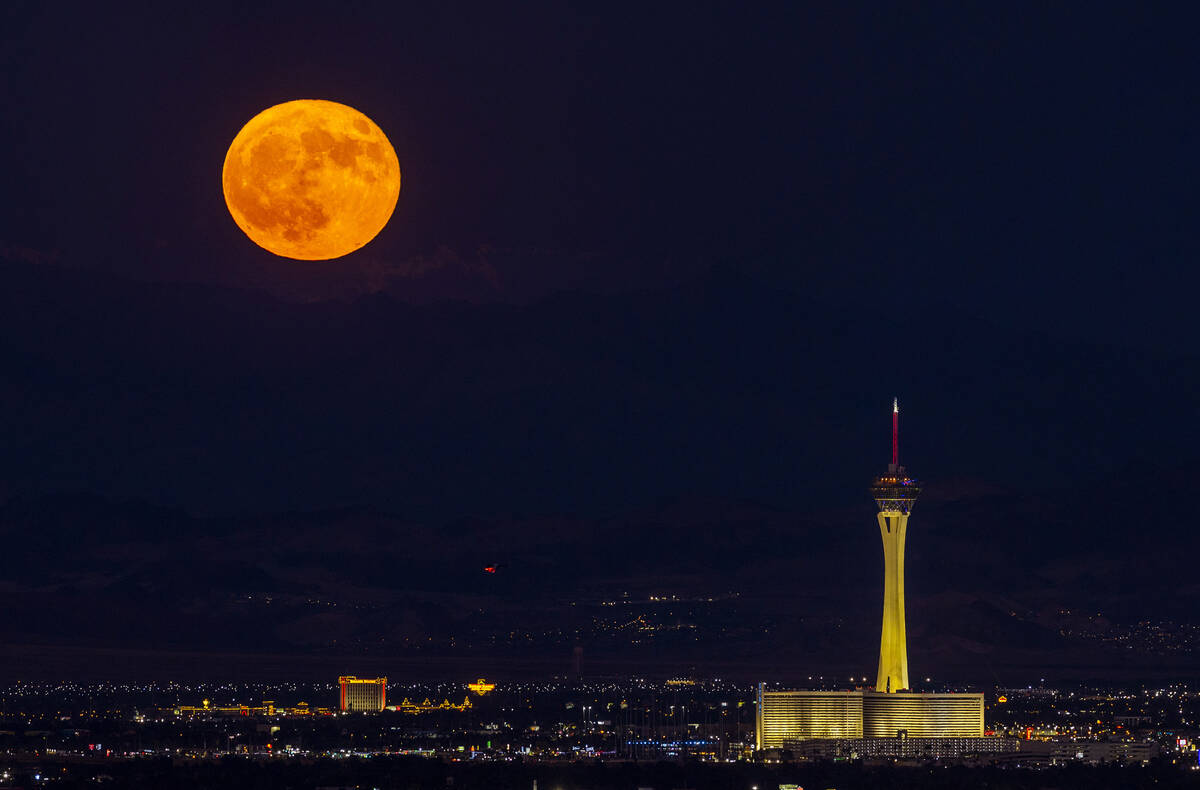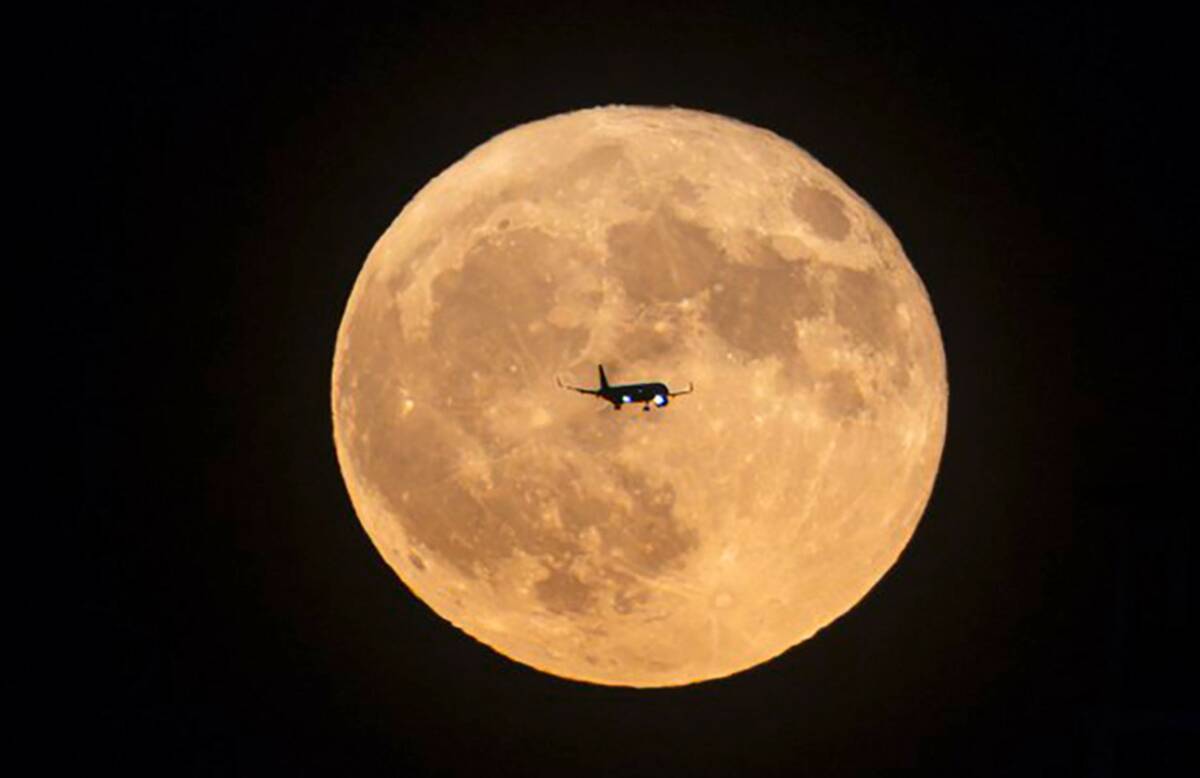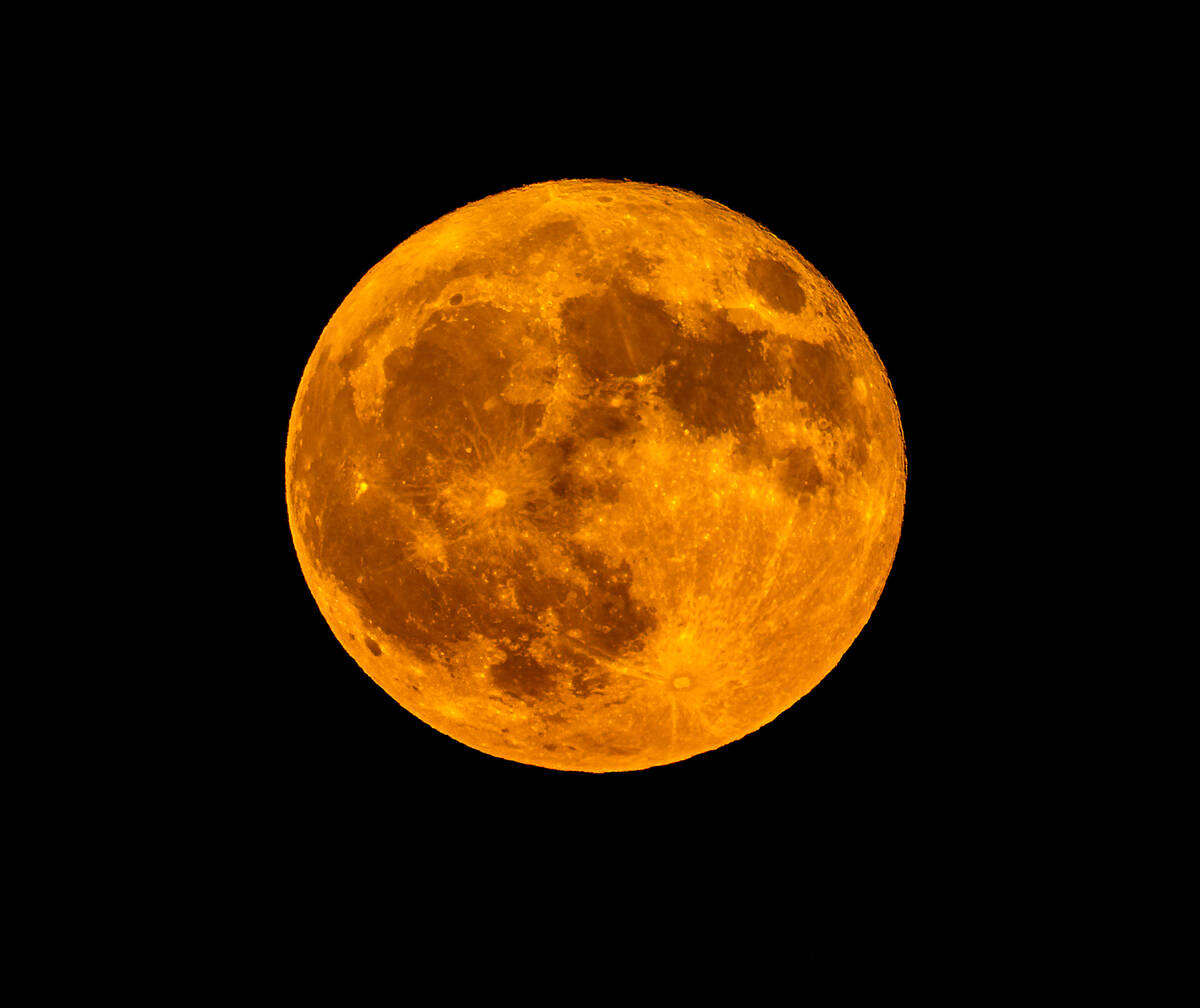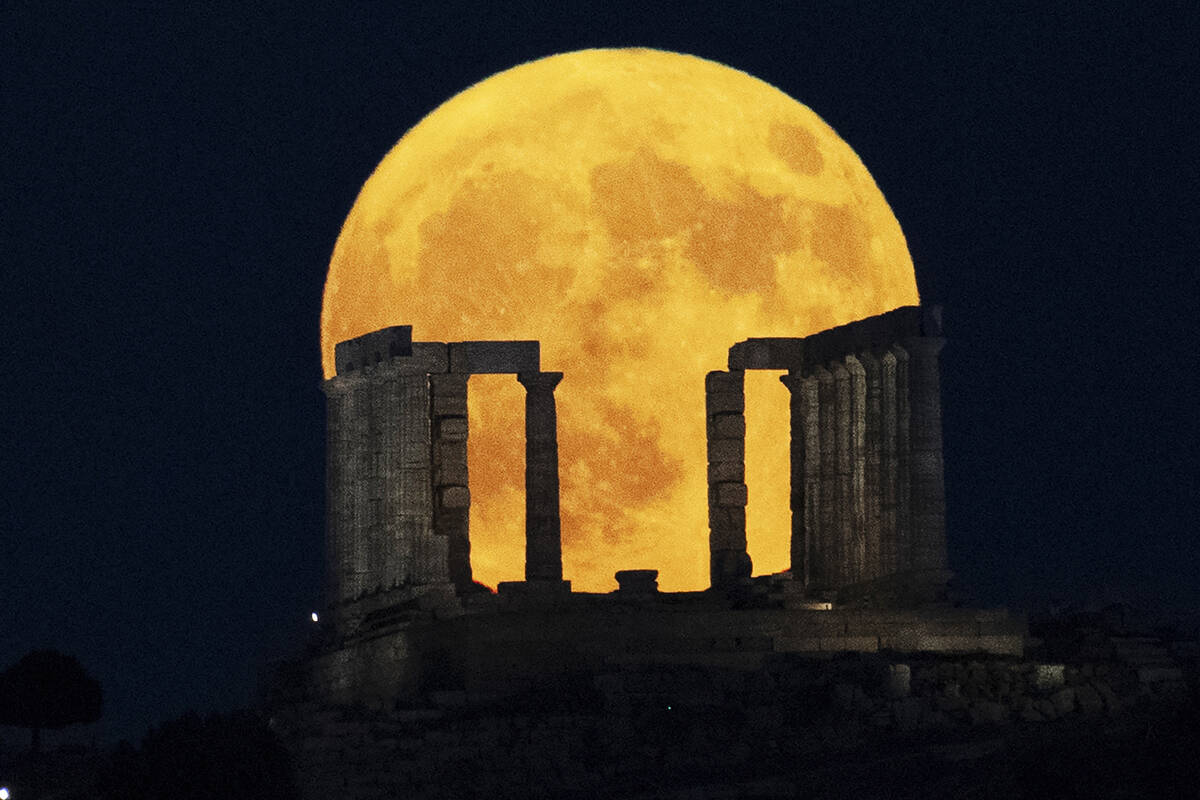Super blue moon seen in Las Vegas ‘a little bit exaggerated’ — PHOTOS
The moon is “blue” and “super” on Monday. Do we care?
There are many remarkable things happening out in space right now.
But Monday’s much-hyped “super blue moon” isn’t one of them — at least not according to astronomers.
“I think this is completely made up stuff,” said Andrew Fraknoi, who has taught astronomy and physics at Bay Area colleges and universities for 30 years.
To be sure, the moon is full. But its technical peak occurred at 11:26 a.m. on Monday morning in California, according to NASA. We won’t see it — it’ll be on the other side of Earth. We’ll be bathed in sunshine.
It’s a “super moon,” which means that it is at perigee, at its closest position to Earth along its orbit. Compared to an average full moon, Monday’s moon will be about 7 percent larger and 15 percent brighter. But that’s not enough to be distinctive to the casual observer.
“If you’re really into astronomy, you’ll notice. But the word ‘super’ used to be reserved for things that were significant,” said Fraknoi. “This is a little bit exaggerated.”
And it’s not “blue.” Its color hasn’t changed. It’s gray and white, as always. The moon only seems to change color when a volcanic eruption, wildfires or pollution send heaps of particles into the air.
The term “blue moon” is usually is defined as the second full moon of the month. Because the moon’s orbit around Earth takes 27 days, and the calendar month is 30 to 31 days long, that sometimes happens. In fact, it happened last year: the second full moon of the calendar month reached its full moon phase at its closest point to Earth last August.
That’s not what is going on now. We’re merely 19 days into the month — so Monday’s full moon is our first.
But there’s another definition: a “seasonal blue moon,” in which a calendar season contains four full moons instead of the usual three.
Monday’s blue moon is the third of the four full moons this summer. Ho hum. The next seasonal blue moon is expected in 2027. (Why is the third full Moon, not the fourth, identified as the extra one? It’s complicated, and not particularly interesting.)
Meanwhile, consider this moon news: The first samples ever taken from its far side have just been delivered to Earth, thanks to a Chinese probe. The four pounds of fresh rocks, which arrived in June, could offer new insights about our nearest neighbor.
Beyond the moon, geophysicists have found remarkable evidence for a large underground reservoir of liquid water on Mars. It’s too deep to be of much use to anyone trying to tap into it to supply a future Martian colony. But the data from NASA’s Insight lander, reported this week by UC Berkeley’s Michael Manga and others in the journal Proceedings of the National Academy of Sciences, could help answer questions about the geological history of the planet – and suggests a promising place to look for life.
Even further away, NASA’s James Webb Space Telescope just discovered a large number of carbon-containing molecules dancing around a very young and low-mass star. Until now, little has been known about the atmospheric chemistry of such distant worlds.
A full moon – even when it’s not super or blue — is always lovely to behold, of course.
“But there are so many truly exciting things going on in astronomy,” said Fraknoi. “These are things I never thought I’d see in my career.”
“It’s been an amazing year,” he said.






















